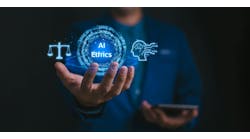Hospitals naturally produce vast amounts of data. Patient monitors record information such as heart rate, blood pressure and temperature, while doctors and technicians produce visual data in the form of x-rays and CT scans. All of this information can be hugely valuable — but only if organizations access it at the right time and have the tools to analyze it in a crisis.
New AI and medical Internet of Things (IoT) technology can make this information as accessible as possible to doctors. As a result, they're transforming how hospitals run where adopted.
Here are six different ways AI and IoT are beginning to change daily operations in hospitals.
1. Improving Diagnostic Accuracy
Even some common or widespread diseases, like breast and lung cancer, can be difficult to diagnose. With these conditions, doctors must correctly identify potential tumors using images from a computed tomography (CT) scanner. Despite being the most effective means of diagnosis available, false positives and negatives are still common.
AI both improves the quality of these scans — stitching together images and cleaning up visual noise for a more complete and easier-to-read scan — and reads the scans themselves. In a few different studies, these AI algorithms have been more effective than radiologists at correctly identifying the signs of cancer in a CT scan.
2. Remote Patient Monitoring
Remote patient monitoring systems take advantage of IoT sensors' internet connectivity to provide doctors and nurses with updates on patient vitals. With these remote sensors, it's possible to track a patient's health from anywhere in the hospital and alert nurses and doctors to significant health events.
These IoT healthcare systems reduce the labor needed to keep track of a patient's health while they're in the hospital. Typically, nurses will need to manually record and log patient vitals every few hours, depending on their condition. With an automated monitoring system, these vitals are automatically recorded and logged, freeing up staff for more critical work.
As medical IoT technology improves, these systems are likely to become more common.
3. Reducing Need For Follow-Up Visits
A similar application of IoT technology can track patients' health once they leave the hospital, reducing the need for follow-up visits.
For example, at the University of Pittsburgh Medical Center Magee-Women’s Hospital, healthcare providers use IoT devices to track the blood pressure of women with pregnancy-related hypertension. Typically, a condition like this would require follow-up visits, even though those with the issue notice it often goes away after birth. With the IoT system in place, 57 percent of patients could skip their first follow-up visit.
4. Reducing Wait Times
IoT technology also reduces wait times in smart hospitals.
Automatic bed-tracking systems notify hospital workers when a bed is free, allowing administrative staff to admit emergency patients as quickly as possible. In one use case, Mt. Sinai was able to slash their admission waiting times in half by implementing one of these systems.
5. Identifying Critical Patients
When hospitals are stressed and reaching their capacity, identifying patients who need immediate attention becomes critical in providing the best possible care. This process isn't easy. Doctors and nurses must analyze vast amounts of patient information and make snap decisions, all while under significant pressure.
Fortunately, AI and IoT systems provide a helping hand in situations like these. Hospitals are using new AI-powered virtual assistants to save their sickest patients. These systems alert doctors when a patient's condition begins to deteriorate and provides them with an analysis of their vitals and conditions. In some cases, these AI hospital systems were able to catch problems that doctors missed.
A few different hospitals have already seen notable success with these AI programs — like, for example, lowering the death rate of patients in the ICU by 12 percent.
6. Tracking Medical Equipment
Lost medical equipment can be a significant expense for hospitals. For example, it's not uncommon for hospitals to lose three to seven wound therapy pumps utilized in negative pressure wound therapy each year. Replacements for these can cost $20,000 to $30,000 each.
With the right tracking systems in place, organizations can greatly reduce the risk of losing medical equipment, lowering costs and ensuring that pumps are available when needed.
New mobile pump devices now come with in-built RFID and GPS systems so that people can track them while in the hospital — and beyond if one is sent home with a patient. The RFID scanning system also automatically requests approval from insurance when a pump gets pulled off of the shelf for patient use. This process ensures that the patient will be pre-approved to take their device home if necessary.
AI and IoT Are Changing How Hospitals Are Run
New AI and IoT innovations allow hospitals to take full advantage of data, like CT scans and records of patient vitals. These systems allow doctors to monitor patient health remotely, even when they're not in the building, and identify which patients need immediate attention. They can also boost the accuracy of diagnoses for certain diseases — like breast and lung cancer.
Kayla Matthews is a MedTech journalist and writer. Her work has also been featured on Medical Economics, HIT Consultant, HealthIT Outcomes and Health IT Answers. To read more from Kayla, please visit her blog here.

